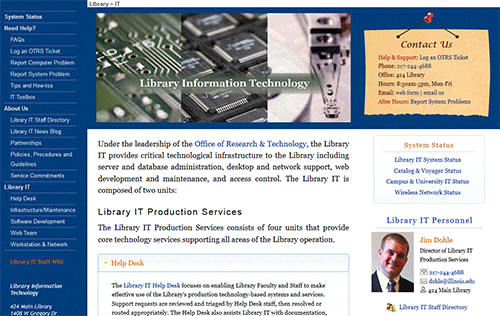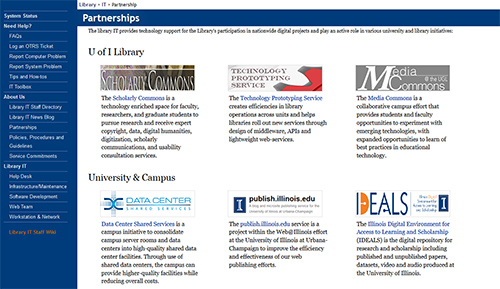Afraid of drawing the wrath of Library Facilities, the cheese weasel skipped over the Library this week. To compensate all our excellent IT professionals who missed out on delicious Kraft American singles under their keyboards, we put together a short list of accomplishments from the past year, and celebrated with bagels (and cream cheese).
In August 2010, Library IT was presented with 12 audit recommendations. The last of these recommendations was met this March, which allowed us to close the almost 4 year old requirement. As part of this process, IT created a service catalog, classified the sensitivity of data in every database and web application, developed policies, processes, and procedures for dealing with disaster scenarios and security incidents, implemented a 24×7 on-call operation for critical services, and much more.
The entire IT infrastructure received a facelift. We added a new tier of storage aimed at providing ingest capacity for the Medusa repository, a working space for digital content in-process, and scratch space for use by patrons at the Media Commons. Medusa itself began taking in materials, and is now rolling as a production service.
Vast improvements were made to public printing, including rolling out web printing as a beta service. Another low-profile beta service that people may have overlooked is volume shadow copy on the G and H drives; it is now possible for Library faculty, staff, and students to recover older versions of files with a right-click.
The Library also extended partnerships with other IT providers. A substantial portion of the Library virtual infrastructure was moved to a shared data center, which opens possibilities for true high-availability features and reduced infrastructure costs in the future. We extended our partnership with the College of Engineering, which hosts our Vacation and Sick Leave reporting system, to include more business and facilities applications.
Never content to rest on our laurels, a group of us proceeded to brainstorm ideas for the next round of initiatives. More than 50 specific ideas coalesced into a handful of themes. The largest category of proposed projects focused on providing support for Library-specific applications. There was a virtual three-way tie for second place, between developing better work flows throughout the Library, providing enhancements to in-house tools and middle-ware, and improving our business continuity (uptime) preparations. It’s too early to tell which of these ideas will turn into tangible projects, but this is a good indicator of how Library IT staff view their long-term priorities.






